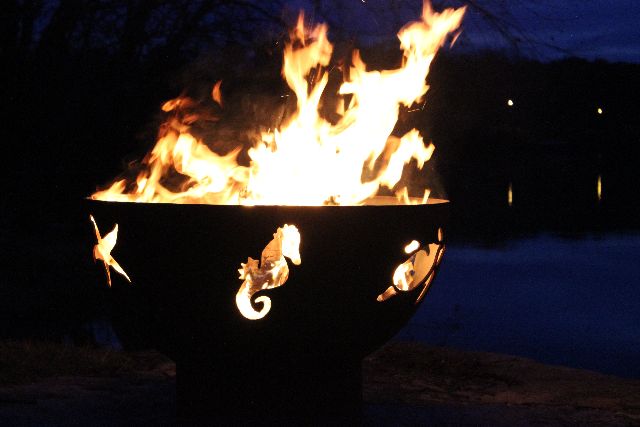
Rid Yourself of Pesky Bugs
 We all have had the annoying pleasure of pesky bugs, (varmints as Grandma calls them), interrupting our outdoor fun. It is really hard to enjoy oneself while being attacked by mosquitoes, flies, bees, gnats, and the dreadful
We all have had the annoying pleasure of pesky bugs, (varmints as Grandma calls them), interrupting our outdoor fun. It is really hard to enjoy oneself while being attacked by mosquitoes, flies, bees, gnats, and the dreadful
“no-see-ums”. You know what I’m talking about; those biting thingies one can never, ever see!
It can be impossible to totally eliminate these pests, but there are ways to discourage their presence.
Many plants and herbs are actually natural insect repellents!
1. Add some plants around your area: One well-known and often used bulbous plant is called the “Allium sativum“, better known as GARLIC. Place them in pots around your patio area. The natural chemicals produced by garlic deter mosquitos and other insect types. And the plants are an attractive addition to your outdoor decor! Plus garlic keeps the vampires at bay or so I have been told. 🙂
Other insect-repelling plants to consider include the following:
* Tea Tree
* Lavender
* Lemon Balm
* Basil
* Rosemary
* Tansy
* Pennyroyal
* Marigold
* Pineapple Weed
Also, you can follow this Wikipedia link for a larger, more specific list of plants/herbs and the insects or rodents they annoy.
2. Citronella Tiki Torches: Not only are these tiki torches fun and great decor addition, but you can also use the citronella in them to repel insects. These torches feature a wick atop a source of fuel and help in illuminating the area.
You can also use a DIY alternative to making your own citronella candles. Just melt beeswax, and carefully pour it into a mason jar with an affixed wick. Mix a few drops of citronella oil into the melted beeswax and once hardened, these can be lit for instant insect relief. Citronella actually comes from the leaves and stems of lemongrass…FYI. The United States Environmental Protection Agency considers oil of citronella as a biopesticide with a non-toxic mode of action.
3. Remove Standing Water: Pesky bugs and mosquitoes breed in standing pools of water. Buckets, unused bird baths, cups, gardening tools, and swimming pool covers can all collect water. Female mosquitoes lay their eggs in containers that collect water. Therefore, you need to remove all standing pools of water from around your home. Depending on the situation, source reduction, biocontrol, larviciding (killing of larvae), or adulticide (killing of adults) may be used to manage mosquito populations. These techniques are accomplished using habitat modification, pesticides, biological control agents, and trapping.
4. Screened Patio Enclosures: A screened enclosure creates a barrier between your outdoor elements and your patio. Obviously keeping gnats, flies, mosquitoes, and other pesky bugs out.
There are a few downsides to using a screened enclosure, one of which is the cost one incurs. Depending on the size of enclosure you need, the cost can be $1000.00 or more. An enclosure can also restrict access to your patio.
5. Turn On A Fan: Stand-alone, oscillating, or overhead fans can increase the airflow and literally blow the insects away.
 6. Light A Fire Pit: Fire pits have become a very popular addition to patios and outdoor spaces. These can have multiple uses. Insects hate smoke, preferring to keep their distance, even if they have to miss out on a meal. Since building a campfire on your patio is out of the question, consider the fire pit option, such as the many choices we offer at www.thefirepitstore.com
6. Light A Fire Pit: Fire pits have become a very popular addition to patios and outdoor spaces. These can have multiple uses. Insects hate smoke, preferring to keep their distance, even if they have to miss out on a meal. Since building a campfire on your patio is out of the question, consider the fire pit option, such as the many choices we offer at www.thefirepitstore.com
If you are using wood in your fire pit, know that using wood with a higher moisture content will better deter bugs. Normally it is best to use dry, seasoned wood, as it burns easier and more efficiently. BUT, For insect issues, Wet wood will produce more smoke, therefore, keeping insects at bay. Always use safety and supervision when you have a fire going.
7. Sodium Vapor Lights: Insects migrate toward lights. So don’t turn off your patio lights, just replace the traditional incandescent white bulbs with sodium vapor bulbs! These types of bulbs use sodium in an excited and activated state to produce light. They produce a more yellow-colored light as opposed to the white light of incandescent bulbs. Yellow light does not attract pesky bugs, plus sodium vapor lights consume less energy than white incandescent bulbs.
If we can be of assistance on how one of our fire pits can enhance and beautify your patio or outdoor living space; we will be happy to speak with you.
www.thefirepitstore.com
Call the number listed on our website should you have any questions.









